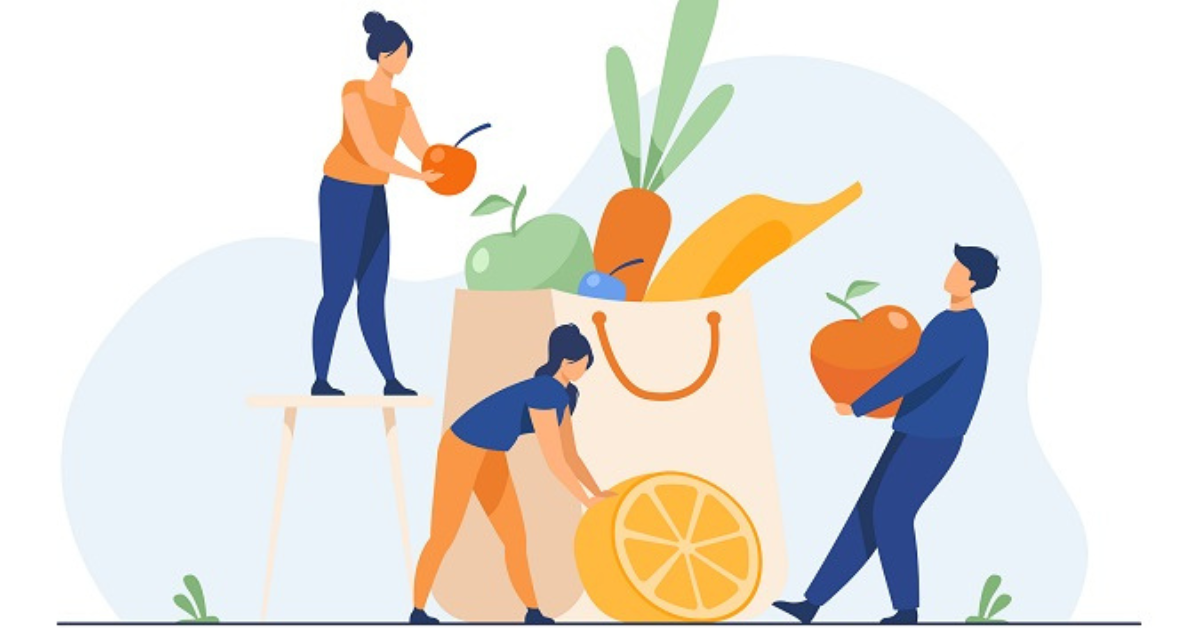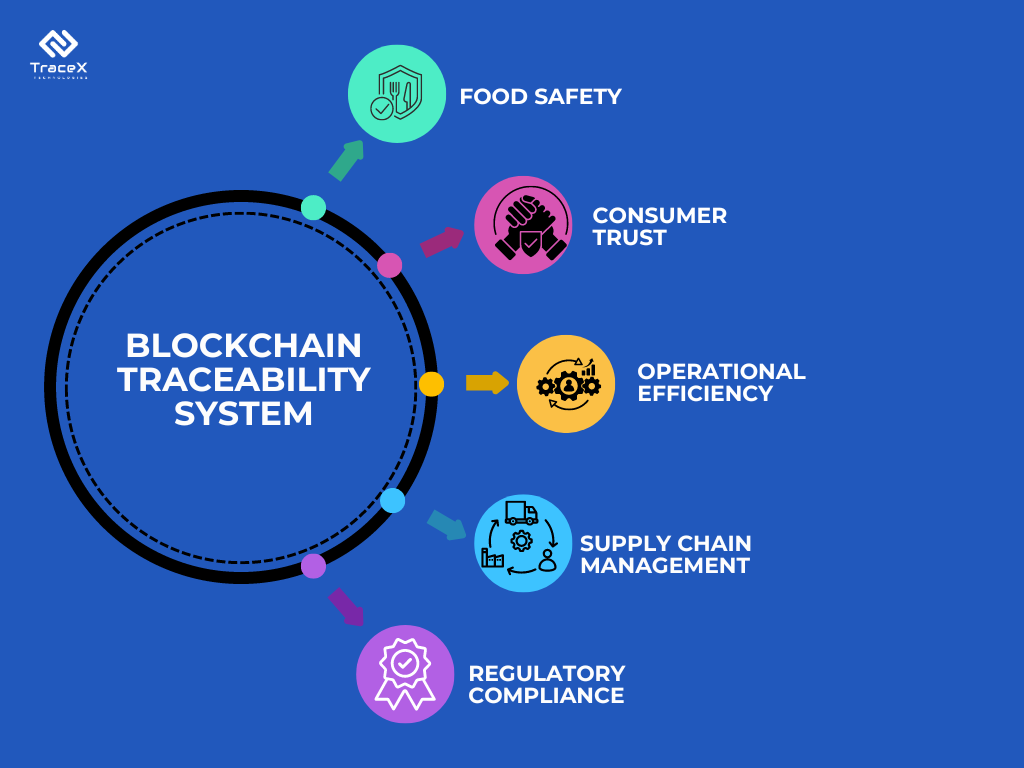Contact: +91 99725 24322 |
Menu
Menu
Quick summary: Discover the essence of effective traceability with these six essential best practices. Uncover how meticulous tracking enhances accountability, transparency, and quality across your processes.

Today ensuring the safety and quality of products in the fast-paced food industry is more critical than ever. Consumers are increasingly demanding transparency, and regulatory pressures are mounting—leaving many businesses grappling with how to effectively manage their supply chains. This is where a robust food traceability system comes into play.
According to Section 204 of the FDA Food Safety Modernization Act (FSMA), the FDA must identify specific foods that warrant additional recordkeeping measures deemed essential for safeguarding public health. These extra recordkeeping specifications are detailed in the Food Traceability Final Rule, which aims to facilitate quicker identification and prompt withdrawal of potentially contaminated food items from the marketplace, thereby reducing instances of foodborne illness and fatalities
Without it, companies risk not only compliance failures but also potential damage to their reputation and consumer trust. By adopting best practices in food traceability, organizations can streamline their processes, enhance product safety, and ultimately gain a competitive edge in the market. Let’s explore six essential best practices that can elevate your food traceability system to the next level.
Key Takeaways
A food traceability system is a method that allows businesses to track and trace the journey of food products from farm to fork. Think of it as a digital breadcrumb trail that documents every step a food item takes in the supply chain—from where it was grown, how it was processed, to where it ends up on store shelves.
Why is this important? Well, imagine a situation where there’s a food safety issue, like a contamination scare. A robust traceability system enables companies to quickly identify the source of the problem, making it easier to remove affected products from circulation and protect consumers.
Moreover, consumers today are increasingly concerned about where their food comes from and how it’s produced. A strong traceability system not only enhances food safety but also builds trust with customers. When brands can provide transparency about their sourcing and production practices, they stand out in a crowded marketplace. In short, a food traceability is essential for ensuring safety, compliance, and consumer confidence in the food we eat.
Forward and backward traceability are two key concepts in the world of food traceability that help us understand the flow of products through the supply chain.
Forward traceability refers to the ability to track a product from its origin all the way to the final consumer. For instance, if you want to know where a particular batch of strawberries came from, forward traceability allows you to see their journey from the farm, through distribution, to the grocery store where you bought them. This process is crucial when a food safety issue arises, as it helps companies quickly inform consumers about potential risks and ensure that contaminated products are removed from shelves.
On the other hand, backward traceability is the opposite—it allows you to trace a product back to its source. If a customer reports a problem with a product, backward traceability lets you identify the specific farm or supplier that provided those strawberries. This is essential for investigating the cause of any issues and implementing corrective actions.
Tracking is all about knowing the current location of a product at any given time. For example, using GPS or RFID technology, companies can see where their goods are during transportation.
Tracing, however, is about looking back through the records to understand the product’s history. It involves collecting data at various points in the supply chain to create a comprehensive view of where the product has been and how it has been handled.
Together, forward and backward traceability, along with effective tracking and tracing, create a complete picture of a product’s journey. This not only enhances food safety and compliance but also builds trust with consumers who want to know the story behind their food.
Traceability is crucial for food safety, quality control and sustainability in the food industry. Traceability practices help companies to manage food safety risks, improve supply chain efficiency and build consumer trust.
Traceability is not information. It is the data which is retrieved, arranged and stored. Traceability system is a storage and retrieval system. There is no relationship between traceability and origin, rather it is the information relating to the origin of the product and the other information which should be recorded with it. As the product passes from one actor to the other in the network, the traceability system collects and records the data points to perform real-time tracking of the product’s movement from the origin to destination.
There are various points along the supply chain where data capture is required to follow the product movement. These are referred to as the Critical Tracking Events (CTEs). This could be in transporting from one facility to another, the changes that occur as products are manufactured during processing. Tracing forward requires accountability and hence these points need to be recorded end to end along the supply chain. At each CTE, the Key Data Elements (KDEs) must be captured to enable tracking and tracing the product movement throughout the supply chain. The concepts of CTEs and KDEs were proposed in 2010, enabling stakeholders to clearly identify data elements required for tracing food products along the supply chain. The CTE/KDE framework provides the what, where and when information about products along the supply chain which need to be recorded and shared among the stakeholders to ensure end to end visibility of the food supply chain.
The implementation of traceability necessitates the use of codes or numbers which provide identification and enable traceability. These codes are known as Traceability codes. All traceable items must be uniquely identified by a Unique identifier or a Batch ID. Batch IDs can be used to track products which have a common problem or with the same expiry date. Batch numbers are issued to a group of products that were manufactured at the same time. This helps to locate products whose life has expired or when a product has to be recalled. The source of the issue can be tracked, and the problem can be corrected.
There should be processes to link identities of raw materials to those of finished product. When value additions are done for a product during further processing, the new product should have a different identifier. A traceability lot code is assigned to each stock lot of a product which arrives at the processing facility.
Product and process properties must be recorded through time stamping and linked to identifiers. It is also important that this data is accessible and shared. The group of products need to be defined to limit the scope of a product recall. Traceability depends on assigning identifiers to units and recording their attributes. Accurate and up to date records should be maintained at every stage in the supply chain. This should include the information on product’s origin, its movement throughout the supply chain and the processing and packaging steps involved.
A recall plan should be developed in case of a food recall. This plan should include procedures for identifying and locating the affected product. A risk assessment on the criticality of the issue needs to be evaluated. The relevant stakeholders need to be notified followed by the investigation process to determine the root causes and how it can be prevented. The recall strategy should be developed including scope of recall, method of contamination and timeline. The recall should be executed as per the plan. A well-designed recall plan is critical for protecting public health and minimizing the impact of a recall on the company’s reputation and profitability.
Standard operating Procedures for product identification and traceability has to be mandatorily followed. This allows for complete and up to date histories of all products that have moved from the source to destination in a food chain. All the components need to undergo quality checks at each stage of the cycle to adhere to standards and should be documented electronically.
Labelling of food products is also an important tool for both consumers and the other stakeholders in the chain.
Traceability is also enabled by standards like GS1 standards and Barcode and RFID technologies. QR codes carry more data than any of these traditional barcodes. Blockchain technology helps in automated data collection and thereby assure data accuracy and security.
Cloud based software solutions give a risk-based approach in processing quality in traceability systems. Blockchain solutions
capture data in real-time on a single platform in immutable and decentralized ledgers to build a robust traceability system. Track and Trace systems leveraging blockchain technologies helps to increase supply chain management and enable end to end visibility in food supply chains.
Transparency and communication are essential for effective traceability. All the stakeholders in the supply chain should be informed about the traceability system and should be able to access the data on the products. This collaborative approach helps to build trust and accountability in the food system.

The TraceX food traceability platform is a cutting-edge solution designed to enhance transparency and accountability in the food supply chain. By leveraging advanced technologies like blockchain, IoT, and cloud computing, TraceX allows businesses to monitor and document every step a food product takes, from farm to consumer.
At its core, the platform helps companies create detailed records of product origins, handling processes, and distribution paths. This means that every stakeholder—from farmers and processors to distributors and retailers—can access real-time data about a product’s journey. The blockchain technology ensures that this information is secure, immutable, and easily shareable, making it incredibly reliable.
One of the standout features of the TraceX platform is its ability to facilitate quick and efficient recalls. If a safety issue arises, companies can quickly trace affected products back to their source, minimizing risks to consumers and reducing the potential for costly recalls.
Additionally, TraceX supports compliance with regulatory requirements, such as the EU Deforestation Regulation (EUDR) and others. By providing a clear audit trail, it helps businesses demonstrate their commitment to sustainability and responsible sourcing.
Overall, the TraceX food traceability platform empowers organizations to build consumer trust, improve food safety, and streamline their operations, all while enhancing their reputation in a market that increasingly values transparency and ethical practices.
In conclusion, implementing these six best practices for traceability in the food supply chain can significantly enhance transparency, efficiency, and safety throughout the entire journey from farm to fork. By leveraging technology, standardizing processes, fostering collaboration among stakeholders, and prioritizing data accuracy, companies can mitigate risks, minimize the impact of recalls, and build trust with consumers. Embracing traceability not only ensures compliance with regulatory requirements but also enables companies to proactively address issues, optimize operations, and deliver high-quality, traceable products to meet the evolving needs and expectations of consumers in today’s dynamic marketplace.
Implementing a food traceability system enhances food safety, facilitates quick recalls, ensures regulatory compliance, and builds consumer trust by providing transparency about product origins and handling.
Technology, such as blockchain, IoT, and cloud computing, enables real-time tracking and tracing of food products throughout the supply chain, ensuring data accuracy and security while facilitating quick access to information during recalls.
Collaboration among all stakeholders—farmers, processors, distributors, and retailers—is crucial for a successful traceability system. By standardizing processes and sharing accurate data, stakeholders can enhance transparency and accountability throughout the supply chain.
